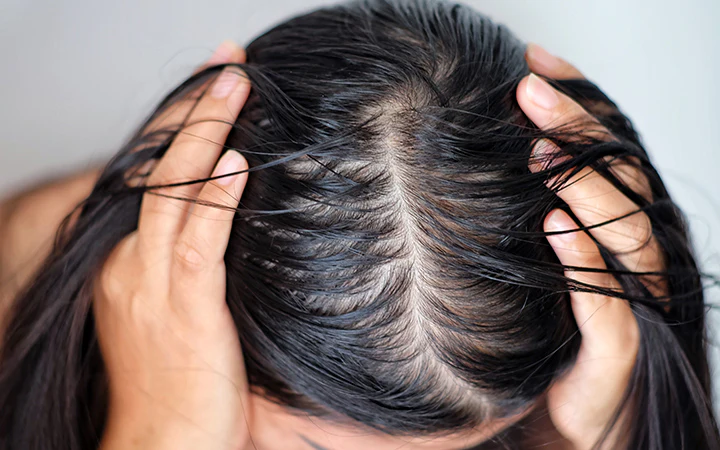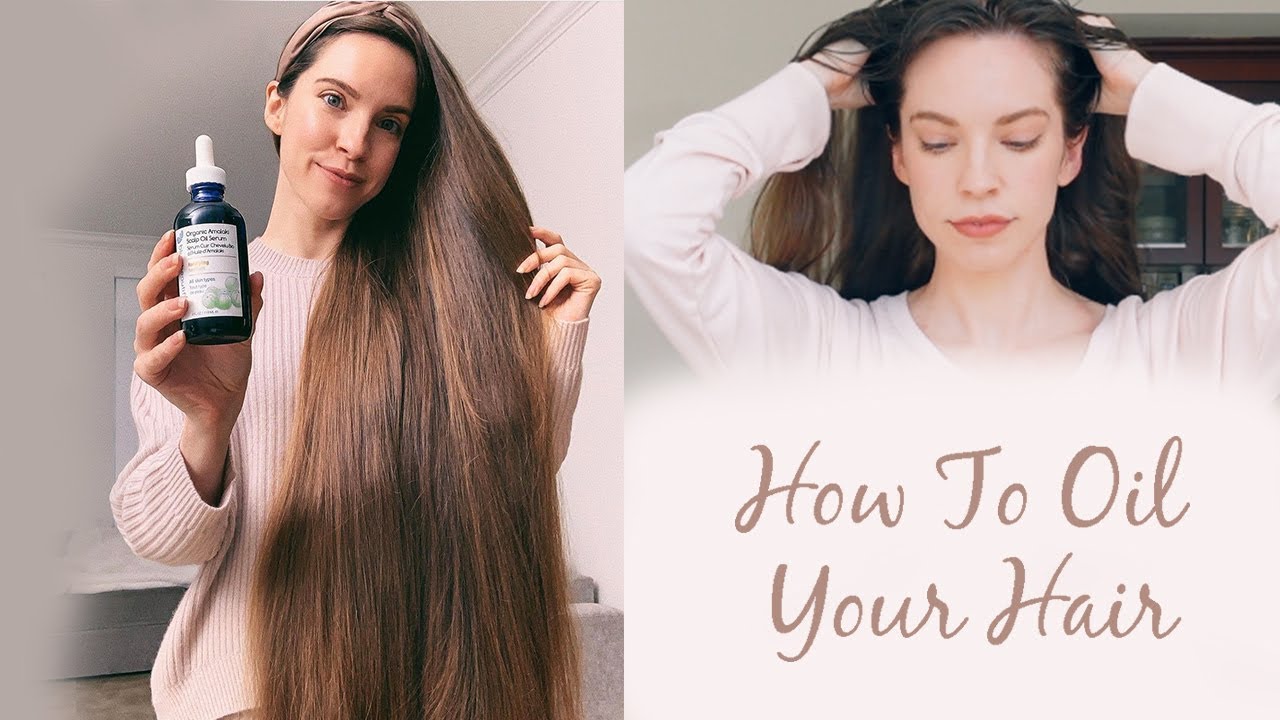Swimming in chlorinated pools can be a lot of fun, especially on a hot summer day. However, anyone who spends time in the water will notice that frequent exposure to chlorine can damage hair, leaving it dry, brittle, and prone to breakage. In this blog, I’ll explain why chlorine is so bad for your hair, how to prevent damage, and how to repair it if the damage has already been done.
How Does Chlorine Affect Hair?
Chlorine is added to pools to kill bacteria and harmful microorganisms. While this is great for keeping the water clean, it’s not great for your hair. Chlorine strips away the natural oils (called sebum) that protect your hair and keep it hydrated. Without this protective layer, your hair becomes:
- Dry and tangled: Your hair will lose its moisture, leading to tangles and dryness.
- Brittle and prone to breakage: Chlorine breaks down keratin (the protein in hair), weakening it and making it more susceptible to breakage.
- Flaky and irritated scalp: Chlorine harms hair and can dry out the scalp, causing itchiness and flakes.
Does Chlorine Turn Your Hair Green?
One common misconception is that chlorine turns your hair green. This isn’t entirely true. Chlorine itself doesn’t cause the green tint, but the copper found in pool water does. When copper oxidizes in chlorinated water, it can attach to your hair, causing a greenish hue, especially in people with lighter hair.
What is Swimmer’s Hair?
Swimmer’s hair refers to hair that has been dried out and damaged by chlorine exposure. It often feels like straw—dry, discolored, and brittle. But don’t worry! You can enjoy the pool without ruining your hair if you take the right preventative steps and know how to care for it afterward.
How to Prevent Chlorine Damage Before Swimming
-
Soak Your Hair with Clean Water
Before jumping into the pool, thoroughly wet your hair with clean, fresh water. Think of your hair as a sponge—once it’s soaked with water, it won’t be able to absorb as much chlorinated pool water. This simple step significantly reduces chlorine absorption.
-
Apply a Leave-In Conditioner
To take extra precautions, apply a leave-in conditioner to wet hair before swimming. This creates a barrier that protects hair from chlorine. A product like INVIGO Nutri-Enrich Wonder Balm is great because it deeply nourishes dry hair and adds moisture.
-
Wear a Swim Cap
A swimcap might not be the most fashionable accessory, but it’s one of the best ways to protect your hair. A swim cap will prevent most of the chlorinated water from coming into contact with your hair and helps retain the conditioner you’ve applied.
How to Care for Hair After Swimming
Even if you’ve taken preventive steps, it’s important to wash your hair right after swimming to remove any residual chlorine and prevent damage.
-
Rinse Immediately
As soon as you leave the pool, rinse your hair with fresh water. The longer chlorine stays on your hair, the more damage it can cause.
-
Use a Clarifying Shampoo
After rinsing, shampoo your hair to remove any remaining chlorine. A clarifying shampoo, like INVIGO Balance Aqua Pure Purifying Shampoo, can help clear away all traces of chlorine and other impurities. If you swim frequently, make this part of your weekly routine to prevent buildup.
-
Apply a Deep Conditioner
After cleansing, it’s time to restore moisture. Use a rich, hydrating conditioner or mask, like the Ultimate Repair Conditioner or a hair mask designed for deep nourishment. This step is crucial to replenish the moisture that chlorine strips away. Products rich in oils like argan oil or aloe vera are ideal for moisturizing and repairing the damage.
Can Chlorine-Damaged Hair Be Fixed?
Yes! Chlorine damage can be reversed with the right care routine. Here are some steps to repair your hair after it’s been affected by chlorine:
-
Use a Repair Treatment
After shampooing and conditioning, apply a quick repair treatment to damp, towel-dried hair. Wella’s Miracle Hair Rescue is a great option—it works in just 90 seconds to make hair 12x smoother and prevent further breakage. You can do this in the shower, making it an easy addition to your post-swim routine.
-
Use a Protein Treatment
Chlorine breaks down the keratin protein in your hair, which makes it weaker and more prone to damage. To rebuild the strength, you can use a protein treatment to restore the health of your hair. Look for products specifically designed to repair protein loss.
-
Skip Heat Styling
Chlorine-damaged hair is already stressed, so avoid adding more damage by skipping heat-styling tools like blow dryers and flat irons whenever possible. Instead, let your hair air dry. If you must blow dry, use a heat protectant spray like EIMI Thermal Image to minimize further damage.
Home Remedies for Chlorine-Damaged Hair
If you prefer natural treatments, there are also home remedies that can help repair chlorine damage:
- Aloe Vera: Apply pure aloe vera to your hair as a moisturizing treatment. It’s rich in vitamins and minerals that promote healthy hair and scalp.
- Apple Cider Vinegar Rinse: A diluted apple cider vinegar rinse (mix 1 part vinegar with four parts water) helps remove chlorine buildup while restoring the hair’s natural pH balance.
- Argan Oil: This oil is packed with antioxidants and essential fatty acids that restore elasticity and add shine to dry, brittle hair.
Prevent Chlorine Damage Long Term
If you swim often, incorporating these tips into your routine will help minimize long-term damage:
- Switch to MagnaPool: Unlike traditional chlorinated pools, MagnaPools use magnesium-based minerals that are much gentler on your hair and skin. They leave your hair feeling soft and hydrated, not dry and damaged.
- Stay Hydrated: Hydration starts from the inside out! Drink plenty of water to keep your body and hair well-hydrated, especially during the summer months when pool activity increases.
- Get Regular Haircuts: Chlorine damage can cause split ends and breakage. Getting regular trims every 6–8 weeks will help keep your hair healthy and prevent further damage.
Final Thoughts
Chlorine is essential for keeping pool water clean, but it’s also harsh on your hair. By taking the right steps before and after swimming, you can protect your hair from chlorine damage. If you’re already dealing with damage, follow the repair steps mentioned above to revive your hair. With proper care and attention, you can enjoy the pool without sacrificing the health and beauty of your hair.
What’s your experience with chlorine-damaged hair? Have you tried any of these tips, or do you have your own methods? Let me know in the comments!
Key Takeaways:
- Always wet your hair before swimming to reduce chlorine absorption.
- Use a leave-in conditioner and wear a swim cap for extra protection.
- Rinse, shampoo, and condition your hair immediately after swimming.
- Use protein and deep conditioning treatments to repair damage.
- Consider natural remedies like aloe vera and apple cider vinegar for at-home care.
With these tips, you can confidently enjoy the pool while keeping your hair healthy and vibrant!



